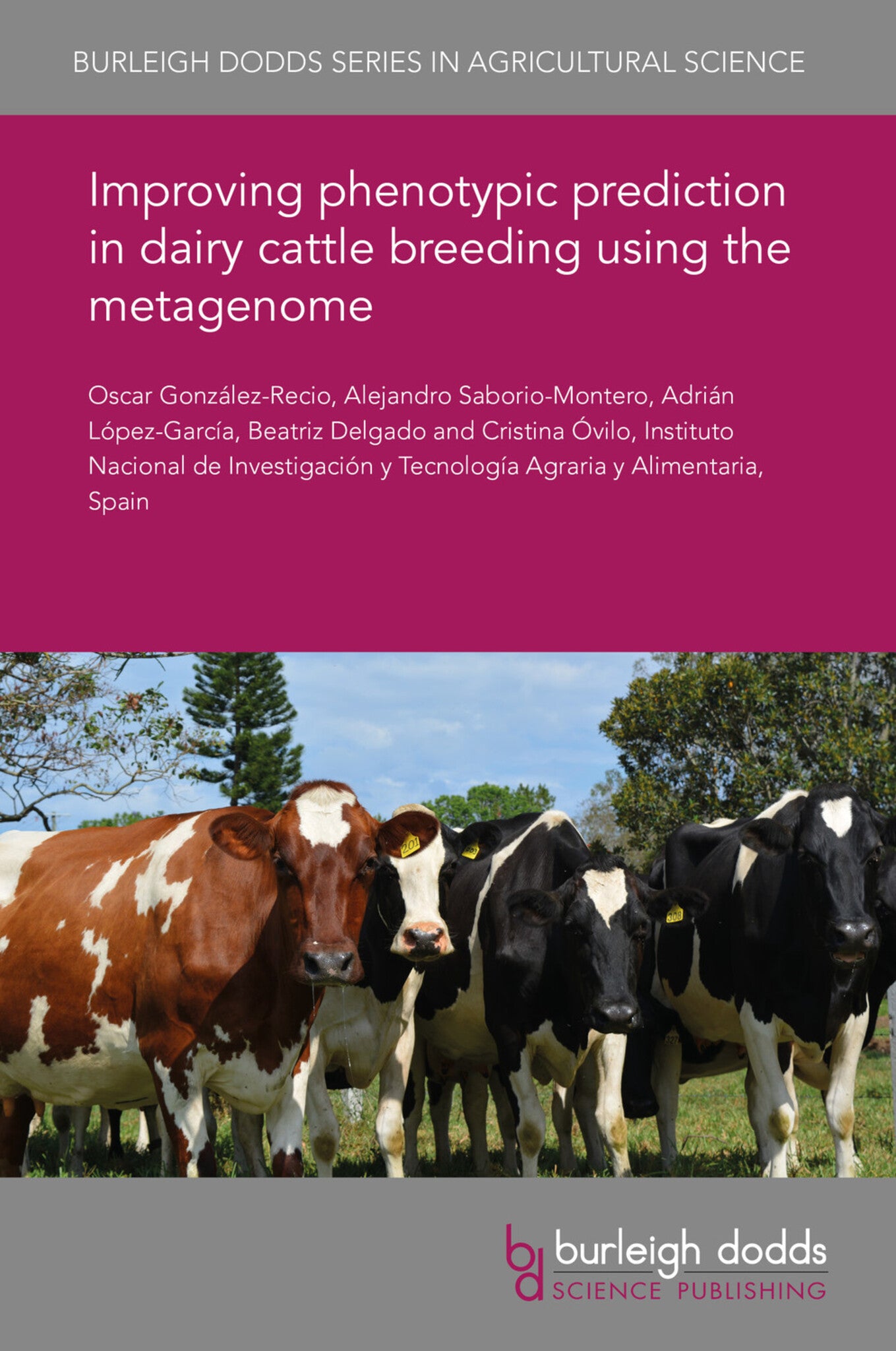We're sorry. An error has occurred
Please cancel or retry.
Improving phenotypic prediction in dairy cattle breeding using the metagenome

Some error occured while loading the Quick View. Please close the Quick View and try reloading the page.
Couldn't load pickup availability
- Format:
-
23 December 2019

The microbiome can be considered as a holobiont organism that populates different niches in mammals. New advances in metagenomics studies offer new possibilities to incorporate the metagenome information into strategies to improve sustainability of animal production.
This chapter explains the importance of the microbiome in complex traits in dairy cattle. The chapter reviews good practices and standardization of protocols in metagenomics studies, and presents the most common strategies to sequence the metagenome. The chapter discusses traditional and new metrics to measure microbial diversity. The chapter examines whole metagenome association analyses. Finally, the chapter discusses bioinformatics options to analyse the metagenome and looks ahead to future research trends in this area.

TECHNOLOGY & ENGINEERING / Agriculture / Sustainable Agriculture, Dairy farming, TECHNOLOGY & ENGINEERING / Agriculture / Animal Husbandry, Sustainable agriculture, Animal husbandry, Animal breeding

1 Introduction 2 Considerations for conducting a microbiome experiment 3 Sequencing the metagenome 4 Microbial diversity 5 Metagenome association studies 6 Genetic regulation of the metagenome 7 Relevance of the metatranscriptome 8 Bioinformatic analysis of the metagenomic data 9 Future trends and conclusion 10 Where to look for further information 11 References



